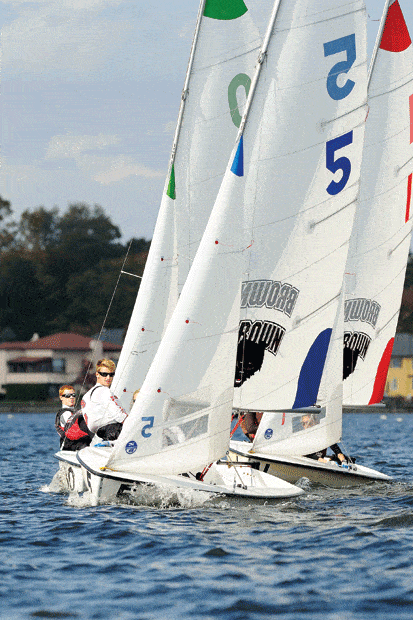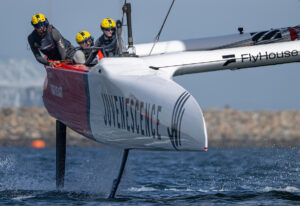
College Sailing Checklist
• Halyards: Are they twisted? Make sure the halyards are cleated correctly, and coil the extra halyard lines and tuck them under themselves. In a 420, put the coils below the partners so they won’t catch the jib sheets. Make sure the mainsail is up all the way.
• Sidestays: Make sure you have all the ringdings and that they are secured with electrical tape.
• Jib Sheets: Do they cross over or twist? Is there a good stopper knot in the end? Note whether your jib sheets are especially long or short.
• Jib Blocks: In a Club Junior, double check where your blocks are set for the breeze conditions. Make sure there is a ringding attaching the block and a spring under the block.
• Centerboard: Make sure the bungee actually holds the centerboard down; you may need to loop it around a few more times. In a 420, use your weight to pull back on the centerboard-downhaul to make sure it doesn’t slip up that extra quarter of an inch.
• Cunningham: Is it actually running through the grommet in the sail? Is it adjusted correctly for the conditions?
• Vang: Are the shackles tightened all the way? Tie the extra tail up so it won’t get in your way.
• Outhaul: Generally, keep it tight all the time. Make sure there is a stopper knot in the end, and loop the tail back on itself aft of the cleat to keep it out of the way.
• Hiking Straps: Make sure they are tied in with good knots. Check the length and see if you need to adjust them. Is the bungee cord about to break? In a 420, reach under to where the hiking straps are screwed in: Are the nuts there?
• By the Skipper: Is the rudder down all the way? Are the plugs in? Inspect the tiller universal to make sure it’s not about to fall off.
• Keep it Dry: Bail and start your new set with a dry boat.









